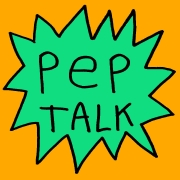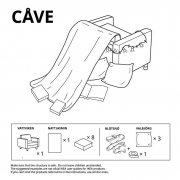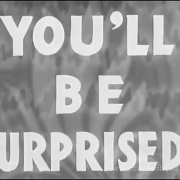RSW Agency New Business Case Study Series, Pt. 2: Case Studies Aren’t About You
RSW Agency New Business Case Study Series, Pt. 2: Case Studies Aren’t About You
In the first part of our New Business Case Study Series, we talked about finding and knowing your audience.
You’ve done your homework, know your reader, and are beginning to have visions of the massive success your shiny new case studies will bring you.
One small detail, however: what exactly do we show that audience?
That brings us to part 2 of our series: using your case studies to tell a story (and that they aren’t about you-more on that later).
Before I was a digital marketing bigshot, I was slinging lattes and waiting tables to make rent.
Very early on, I was taught that the key to happier customers and bigger tips was to ask questions.
A full table might not remember my name by the time the check arrived, but the more interest I had shown in them, the more likable I was. That meant more money in my pocket at the end of the night.
It turns out the same lesson applies to sales and marketing.
When onboarding new clients, case studies come to us in many forms – previous pitch decks, web sites, old mailers, or simply internal write-ups. I’ve seen countless variations, but there’s one misstep I see consistently:
So many agencies make their case studies all about themselves
Yes, I know that statement seems contradictory or counter-intuitive.
Case studies are sales tools. Shouldn’t they be selling you and how awesome you are?
But when actively approaching prospects, you’re asking for their time and attention – something that’s a very valuable commodity these days – and they might not take kindly to an interruption.
If your content immediately goes into sales mode without first proving your value or gaining their interest, you’re likely to get an eye roll and ignored.
Here comes a nuanced distinction: your case study shouldn’t be your success story – it should be your client’s success story.
Here’s an example:
RSW/US was brought on to help an East Coast media agency land new business in the entertainment sector. By guiding them with tailored lists, customized content, and consistent outreach, we helped them break through.
vs.
___, an East Coast media agency, had deep experience in the entertainment industry but struggled to follow up on new business leads. They lacked the perspective needed to generate content, build lists, and consistently engage prospects.
The information in the second example is the same overall as the first but the tone and focus has shifted.
One version is about us, the other is about our client.
A majority of case studies I see from new clients start off like the first example, yet the case studies that get results are more like the second.
Think of a case study as a story in three parts:
Pt 1. The Damsel in distress – AKA The “before” photo
I like to challenge clients to not even mention themselves in this section.
Paint a picture of your client’s situation before you came in:
What were they struggling with? What processes, creative, messaging, or platforms were getting mediocre results? Simply put, what wasn’t working?
Done right, the reader will empathize with your client and possibly realize they share some of the same struggles.
Much like asking a customer at a coffee shop what’s on their mind, priming a prospect to think about their current situation and challenges makes you seem all the more likable and favorable when you reveal that you just might have a solution.

Pt 2 – The Hero saves the day
This is your time to shine.
Clearly explain the steps you took to help your client, but make sure it’s a direct answer to “How did we solve this problem?” or “What did we do for our client?”
If it doesn’t tie into the first part – leave it out!
You don’t need to go into exhaustive detail here.
Give them just enough information to show them how competent and capable you are, but keep them focused on their own problems.
A skilled bartender will pepper in just enough details about their lives to seem relatable and keep the conversation going, without revealing their life story.
Being brief also gives a great opening for follow up.
If a prospect wants to learn more they can follow up and have something to discuss.
Pt3 – The Happy Ending
Let’s be real – no matter how compelling your narrative is, results are often the first thing a prospect looks for in your case study.
Results are often the proof the reader looks for to show that the rest of the case study is worth their time.
Think about the numbers and creative that made your client the most excited.
Sometimes that’s the awards or media coverage, but more often it’s the increased revenue and decreased costs – bottom-line numbers.
This is when getting the reader to empathize with the subject of the case study pays off.
The more a prospect’s challenges mirror the challenges described in the case study the more likely they will be impressed by the results.
These are the reactions you want:
“Oh wow – what audience was that designed for? We also go after the X,Y, and Z demographic.”
“How did they raise Instagram engagement that much? Why isn’t our social media strategy pulling those kinds of numbers?”
“They reduced the cost-per-click to what?!”
And most importantly: “I want something like that!”
Finally, remember, the work you are most proud of might not be the work your prospect is looking for.
As a barista, it wasn’t uncommon for customers to ask me about my favorite thing on the menu.
That was always a tricky situation.
What if they were craving a simple dark roast drip or imported pour-over and I answered truthfully, recommending my favorite overly sugared frozen coffee concoctions with lots of whipped cream and sprinkles?
I wouldn’t have a happy customer.
“What’s your favorite thing on the menu?” really means “What do you think my favorite thing on the menu will be?”
Or in terms of case studies: “Show me your best work!” should be interpreted as “Show me your work…that best suits my needs.”
If you’ve taken the time to understand your audience as we outlined in part 1 of this series, you should have enough information to craft your story suited to your prospect’s tastes.
As your program goes on, you can refine your messaging and story based on feedback and results.
The days of leaving work with the scent of coffee seeped into my pores are well behind me, but ultimately, my goals are pretty similar.
I help clients and NBDs figure out how to best engage prospects and serve up content that is actually relevant to them.













